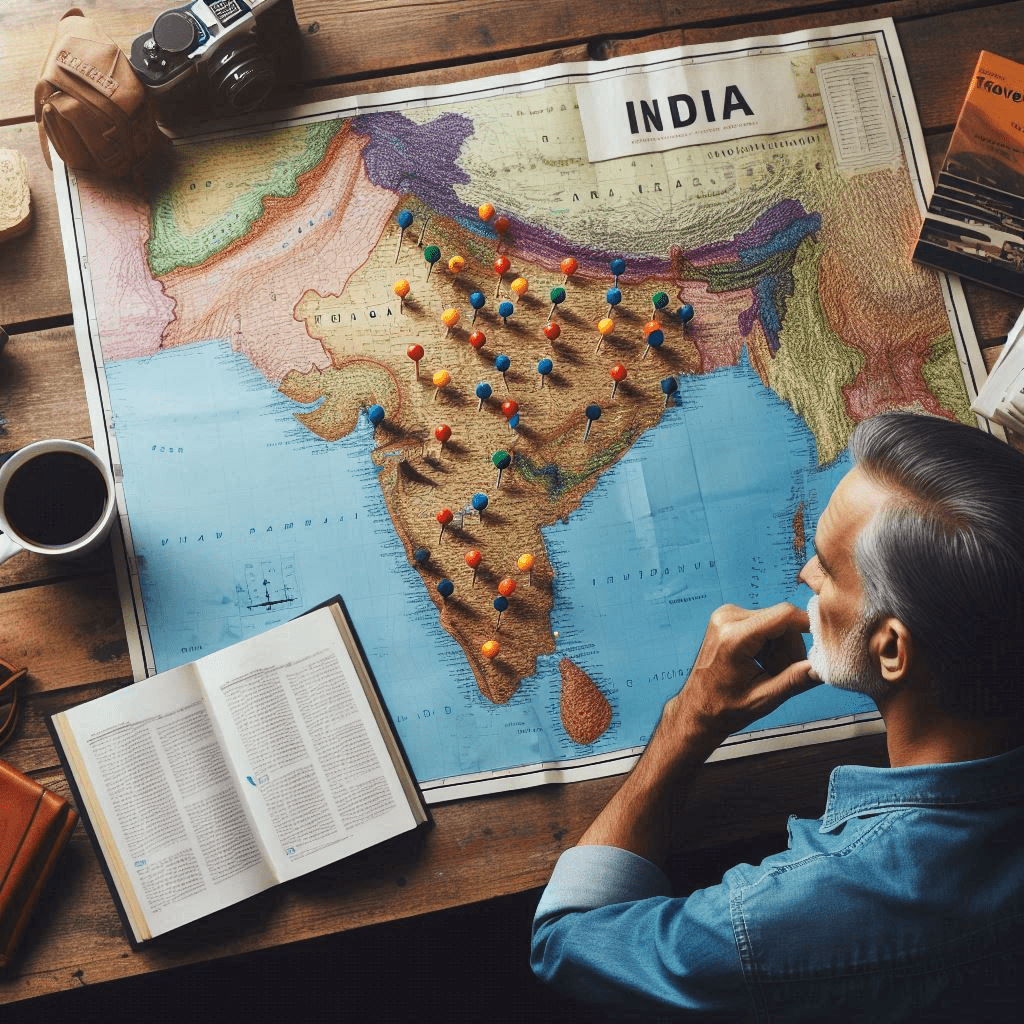To make your trip to India memorable without feeling overwhelming, plan a balanced itinerary that blends iconic sights, local experiences, and downtime. Here’s a clear, practical guide to help you explore India like a pro.
Choose the Best Regions for Your Interests
India is vast, so focus on 2-3 regions that suit your travel style. Here’s a quick breakdown:
- North India: Perfect for history and culture lovers. Marvel at the Taj Mahal in Agra, explore Delhi’s chaotic yet charming markets, or find peace at Amritsar’s Golden Temple.
ITT Pro Tip
Check travel times between destinations. Trains are scenic but slow (e.g., Delhi to Agra takes 3 hours). For longer distances, like Delhi to Mumbai (2-hour flight), domestic flights save time. Plan internal travel to maximize your sightseeing.
- South India: Ideal for nature and relaxation. Lounge on Goa’s sandy beaches, glide through Kerala’s serene backwaters, or visit ancient temples in Tamil Nadu.
- West India: Great for adventure and foodies. Discover Rajasthan’s majestic forts, savor Gujarat’s spicy dishes, or dive into Mumbai’s fast-paced vibe.
- East India: Best for offbeat explorers. Sip tea in Darjeeling’s misty plantations, wander Kolkata’s colonial streets, or visit Odisha’s sacred temples.
- Embrace Theme-Based Travel: Design your trip around a specific interest (e.g., spiritual journey, heritage, adventure, food) to create a focused and immersive experience.
Choose the Best Time to Visit
India’s climate varies by region, so timing is key:
ITT Pro Tip
Microclimates: Coastal areas (Goa, Mumbai) stay warm year-round, while deserts (Rajasthan) have extreme temperature swings (hot days, cold nights). Check forecasts for specific cities on sites like AccuWeather.
- October to March: Best for most of India—cooler temperatures, ideal for sightseeing in North India (Delhi, Rajasthan, Agra) and Central India (Madhya Pradesh). Perfect for festivals like Diwali (October/November).
- April to June: Hot in the plains, but great for hill stations like Shimla, Manali, or Darjeeling.
- July to September: Monsoon season—lush greenery in Kerala, Goa, and the Northeast, but avoid heavy rainfall areas like Mumbai or coastal regions prone to flooding.
Build a Smart Daily Itinerary
India’s energy—its heat, crowds, and traffic—can be intense. Keep your schedule manageable to enjoy every moment.
- Keep It Simple: Plan 2-3 activities per day. For example, visit a temple in the morning, enjoy a leisurely lunch, and explore a market in the evening.
ITT Pro Tip
Carry a reusable water bottle and wear comfortable shoes as sights often involve walking or climbing steps.
- Allow 1-2 hours of buffer time for delays due to traffic, crowds, or unexpected discoveries.
- Stay Flexible: Leave space for spontaneous discoveries, like a vibrant street festival or a hidden café recommended by a local.
- Start Early: Popular spots like the Taj Mahal or Jaipur’s Amber Fort are less crowded and cooler at sunrise. Early starts also leave afternoons free for relaxing.
- Factor in Travel Time: Consider travel time due to potential traffic and significant distances between locations. To make the most of your trip, estimate travel durations using tools like Google Maps or local insights, group nearby attractions to reduce transit times.
- Allocate “Discovery Days”: Leave unscheduled half-days or full days in your itinerary for spontaneous exploration, unexpected finds, and simply soaking in the local atmosphere.
- Factor in “Culture Shock Recovery” Time: Plan for decompression periods, especially after intense travel or city visits, or start in a less chaotic city to ease into the experience.
Where to Stay for a Memorable Experience
Mix up your accommodations to immerse yourself in India’s diversity:
- Boutique Hotels: Stylish and cozy, perfect for urban hubs like Jaipur, Bangalore, or Delhi.
- Homestays: Live with local families in Kerala, Himachal Pradesh, or rural Rajasthan for authentic meals and cultural insights.
- Heritage Hotels: Stay in converted palaces in Udaipur or Jodhpur for a royal experience steeped in history.
Travel Tip: Book early, especially for peak season (October to March), when top hotels and homestays fill up fast. Use platforms like Airbnb or Booking.com for trusted options.
Must-Do Experiences to Enrich Your Trip
Go beyond the guidebooks to create lasting memories:
- Iconic Landmarks: Visit must-sees like the Taj Mahal, Varanasi’s spiritual ghats, or Hampi’s ancient ruins.
ITT Pro Tip
Hire a local guide for half a day at complex sites like Khajuraho’s temples or Fatehpur Sikri. Their stories bring history to life and cost around ₹500-1500 ($6-20 USD).
- Local Culture: Take a cooking class in Jaipur to master butter chicken, shop for handmade crafts in Delhi’s Chandni Chowk, or join locals for a Diwali or Holi celebration.
- Hidden Gems: Chat with locals for insider tips. Your homestay host might recommend a secluded waterfall, a quiet temple, or a street food stall with the best samosas.
Categories :


